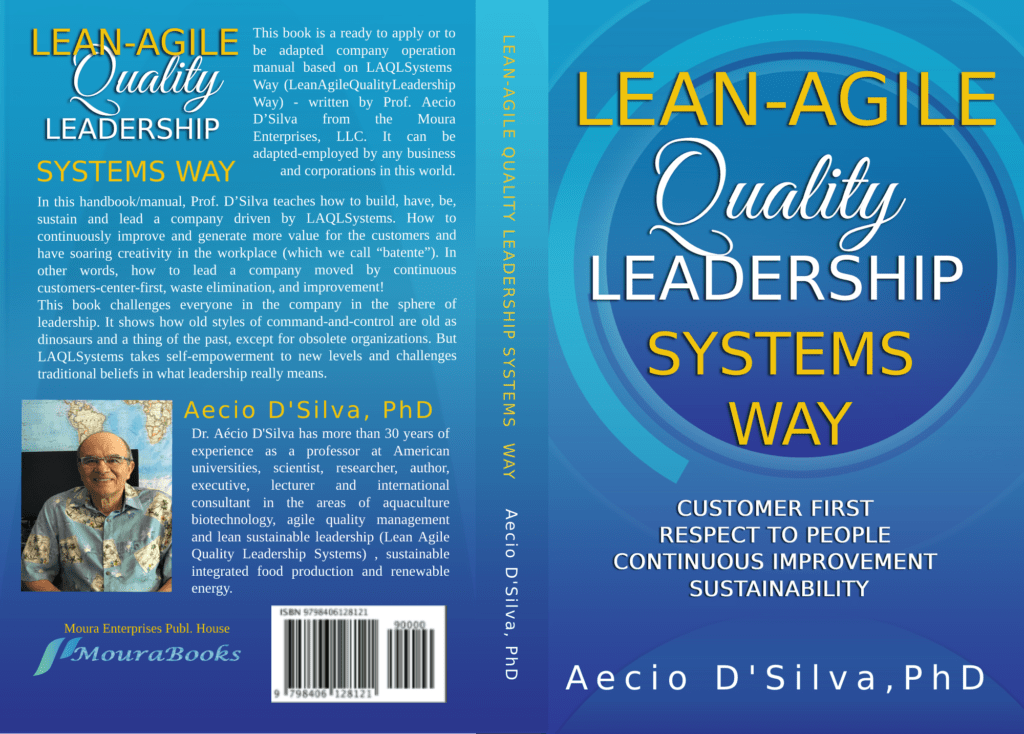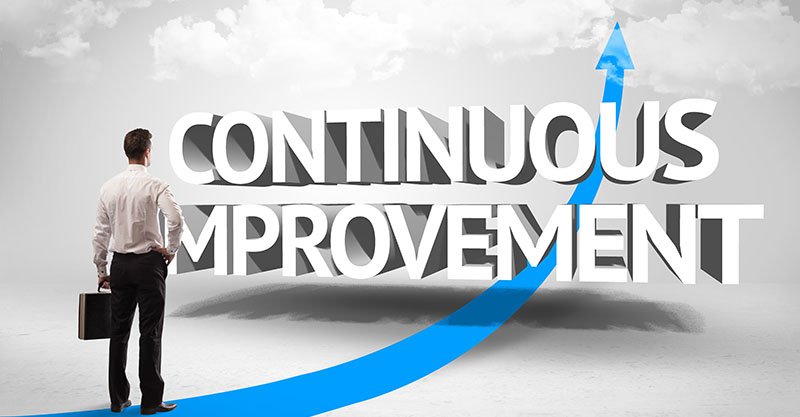Embracing a Dynamic Approach to Drive Your Business Success
Aécio D’Silva, PhD(1), Fabiano Moura, MSc(2)
(1) Moura Enterprises, AquaUniversityTucson, AZ 85742, EUA; (2) Profound Commerce, Inc. Austin, TX 78746
Embracing Change: Unlocking the Power of a Dynamic Business Model

LAQL Way Change Business Model – In today’s rapidly evolving business landscape, the ability to adapt, innovate, and continuously improve is crucial for long-term success. Traditional static business models are no longer sufficient to meet the challenges posed by a dynamic market environment. Instead, organizations need to embrace a change business model that is characterized by constant adaptation, improvement, and the removal of wastes. In this blog post, we will delve into the concept of LAQL Way change business model, exploring how it enables organizations to thrive in an ever-changing world.
LAQL Way Change Business Model – Embracing Change and Adaptation
LAQL Way change business model revolves around the central idea of embracing change and adaptation as an ongoing process. Instead of clinging to outdated strategies and practices, organizations adopting this model are open to new ideas, technologies, and market trends. They continuously monitor the external environment, identify emerging opportunities, and adapt their operations accordingly. By being proactive and responsive to change, these organizations gain a competitive advantage, positioning themselves ahead of the curve.
Continuous Improvement: Driving Business Excellence
One of the key principles of LAQL Way change business model is a relentless focus on continuous improvement. Organizations that adopt this approach understand that complacency leads to stagnation. They actively seek ways to enhance their products, services, and internal processes. By fostering a culture of innovation and learning, these organizations encourage their employees to suggest improvements and implement them. This continuous improvement mindset ensures that the organization remains agile, efficient, and responsive to customer needs, thus fueling business excellence.
Waste Elimination: Streamlining Operations
LAQL Way change business model emphasizes identifying and removing wastes within the organization. Waste can take various forms, such as excessive inventory, unnecessary process steps, or underutilized resources. By employing LAQL principles, organizations can systematically identify and eliminate these wastes, streamlining operations and enhancing efficiency. This approach minimizes costs, reduces lead times, and improves overall productivity, ultimately leading to increased customer satisfaction and profitability.
Embracing Innovation: Staying Ahead of the Curve
In a LAQL Way change business model, innovation is not seen as a one-time event but as an ongoing process. Organizations continually seek innovative solutions, explore new technologies, and adapt to market dynamics. By fostering a culture of creativity and collaboration, these organizations encourage their employees to think outside the box and generate novel ideas. They invest in research and development, forge strategic partnerships, and embrace emerging trends. This proactive approach to innovation allows organizations to stay ahead of the curve, anticipate customer needs, and create new value propositions.
LAQL Way Change Business Model Is Based on The Following Principles:
– Change is inevitable and desirable. You accept that market conditions, customer preferences, and technological innovations are constantly advancing, and you adapt accordingly. You do not resist or fear change, but welcome it as an opportunity to learn and grow.
– Change is continuous and incremental. You do not wait for major disruptions or crises to initiate change, but you make small and frequent improvements every day. You use feedback loops, experiments, and data to test your assumptions and validate your solutions.
– Change is collaborative and cross-functional. You involve your employees, customers, and partners in the change process and leverage their diverse perspectives and skills. You break down silos and foster a culture of teamwork and innovation.
– Change is customer-centric and value-driven. You focus on delivering value to your customers and solving their problems. You use customer feedback, surveys, and interviews to understand their needs and expectations. You measure your success by the outcomes you create for your customers, not by the outputs you produce.
LAQL Way Change Business Model Can Help You Achieve the Following Benefits:
– Increase your customer satisfaction and loyalty. By constantly improving your products and services, you can meet and exceed your customers’ expectations and create positive experiences for them. You can also anticipate their future needs and offer them innovative solutions before your competitors do.
– Enhance your operational efficiency and quality. By eliminating wastes, errors, and redundancies, you can reduce your costs, increase your productivity, and improve your quality standards. You can also optimize your resources, processes, and systems to deliver faster and better results.
– Boost your innovation and creativity. By encouraging experimentation, learning, and collaboration, you can generate new ideas, discover new opportunities, and solve complex problems. You can also foster a culture of innovation where employees are empowered to take risks, challenge assumptions, and try new things.
– Strengthen your competitive advantage and market position. By adapting to changing market conditions, customer preferences, and technological innovations, you can stay ahead of the curve and differentiate yourself from your competitors. You can also create value propositions that are unique, relevant, and compelling for your customers.
How to Implement LAQL Way Change Business Model Successfully
LAQL Way change business model is not a one-size-fits-all solution, but a flexible and dynamic approach that can be tailored to your specific context, goals, and challenges. To implement a change business model successfully, you need to:
– Define your vision and strategy. What are you trying to achieve with your change business model? What are your objectives, priorities, and success criteria? How will you measure your progress and performance?
– Assess your current state and gaps. Where are you now with your change business model? What are your strengths, weaknesses, opportunities, and threats? What are the gaps between your current state and your desired state?
– Design your future state and roadmap. How will you close the gaps between your current state and your desired state? What are the key changes you need to make in your products, services, processes, systems, culture, and capabilities? How will you sequence, prioritize and execute these changes?
– Implement your changes and monitor your results. How will you execute your changes effectively? What are the resources, roles, responsibilities, and timelines involved? How will you communicate, engage and support your stakeholders? How will you track, evaluate, and report your results?
– Learn from your feedbacks and iterate. How will you collect feedbacks from your customers, employees, and partners? How will you analyze these feedbacks to identify what works well and what needs improvement? How will you incorporate these feedbacks into your next cycle of changes?
Concluding, LAQL Way change in the business model represents a fundamental shift in how organizations approach their operations. By embracing change, fostering continuous improvement, eliminating waste, and embracing innovation, organizations can thrive in an ever-changing business landscape. This dynamic approach enables them to adapt quickly to market shifts, enhance their products and services, streamline operations, and stay ahead of the competition. In an era where change is the only constant, organizations that adopt a change business model position themselves for sustained success and growth.
References:
Smith, J. (2020). Embracing Change: The Benefits of a Dynamic Business Model. Harvard Business Review.
Johnson, R. (2018). Continuous Improvement: The Key to Business Excellence. Forbes.
Womack, J., & Jones, D. (2003). Lean Thinking: Banish Waste and Create Wealth in Your Corporation. Simon & Schuster.



